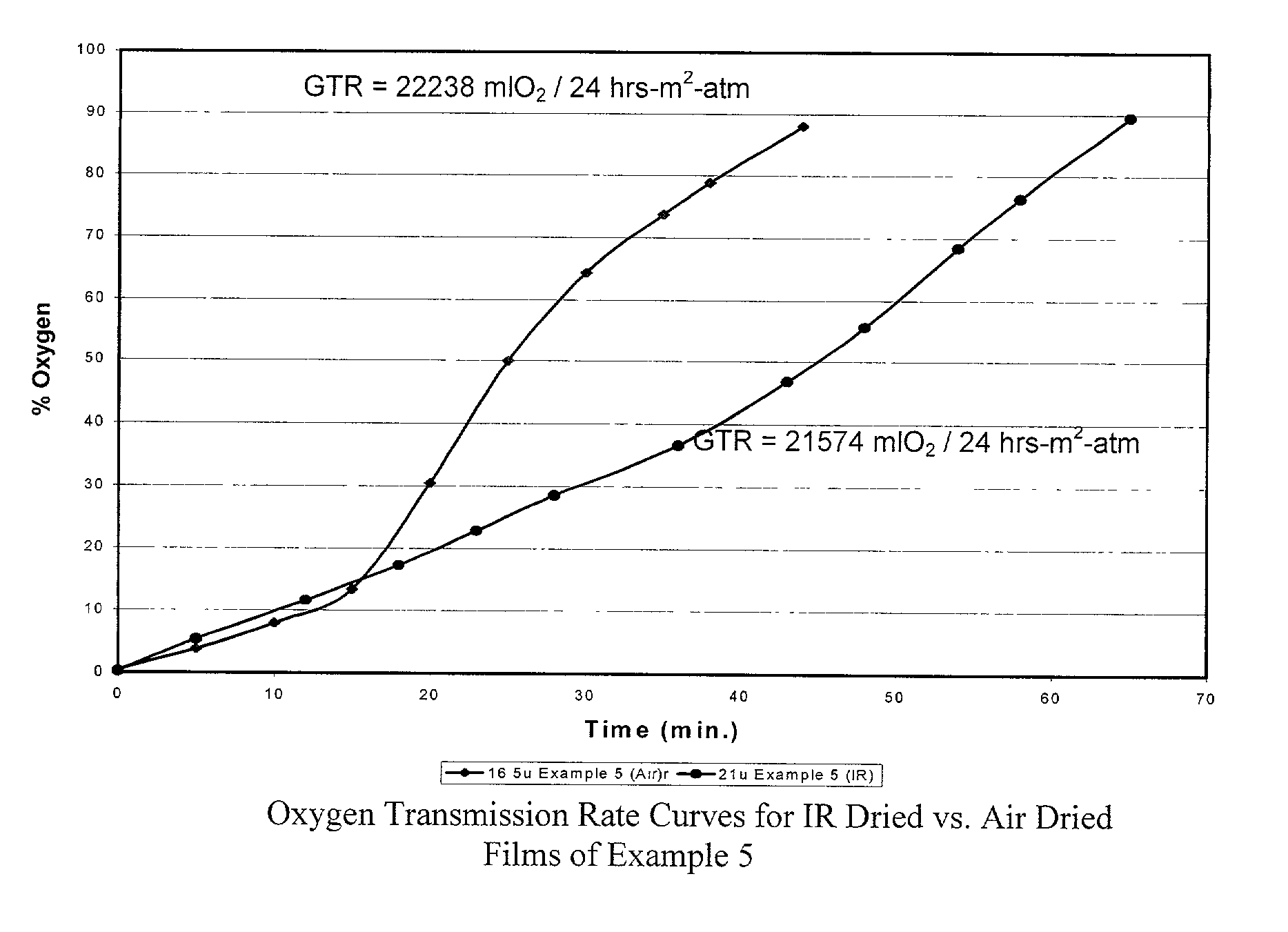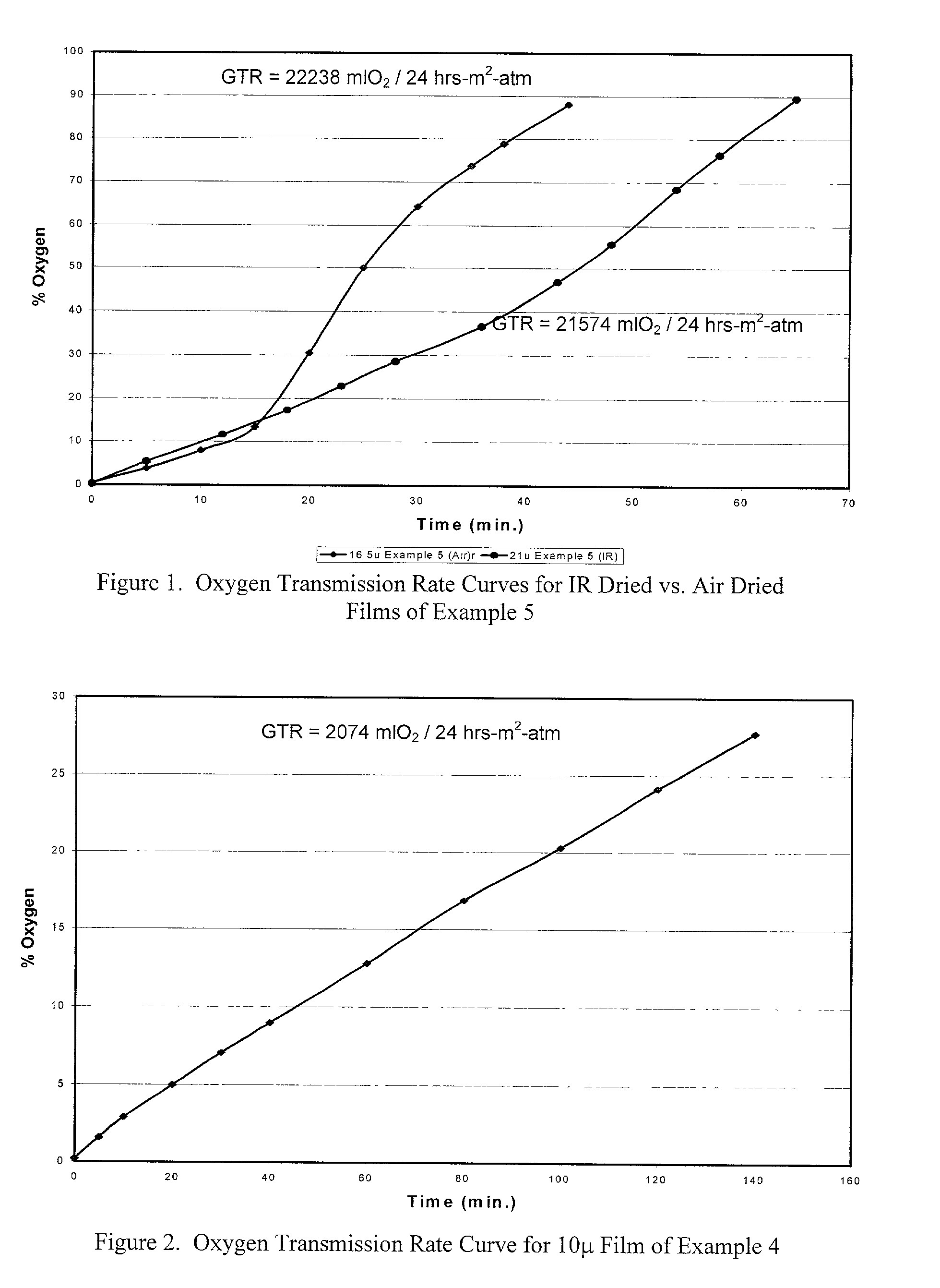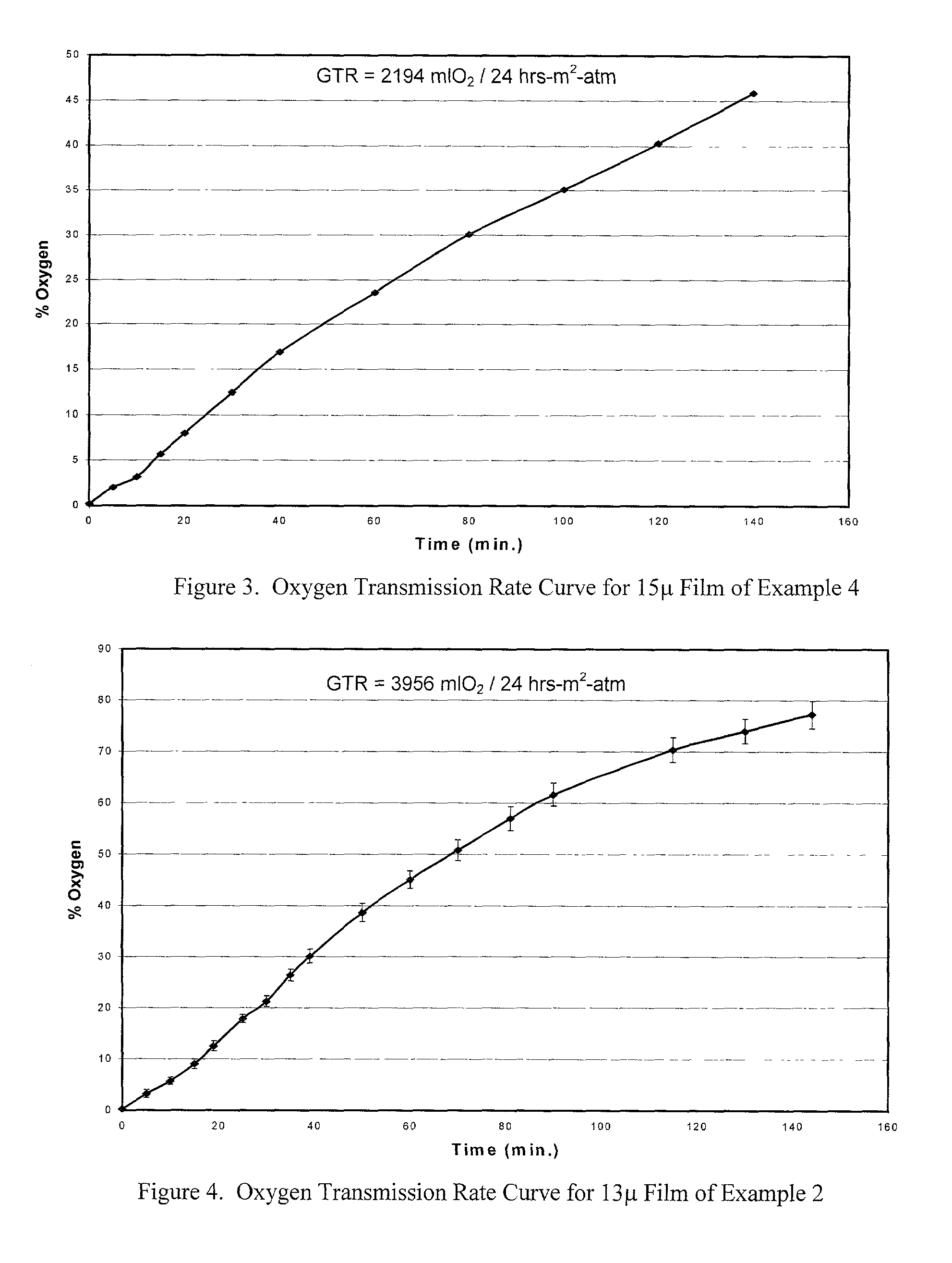Composite oxygenator membrane
a technology of oxygenator and membrane, applied in the field of blood oxygenators, can solve the problems of compromising efficiency and reliability, providing these functions at a substantial cost to the immune system, and deteriorating rapidly in their mechanical properties,
- Summary
- Abstract
- Description
- Claims
- Application Information
AI Technical Summary
Problems solved by technology
Method used
Image
Examples
Embodiment Construction
[0042] The following techniques were employed in preparing and testing composite oxygenator membranes in accordance with the present invention:
[0043] Film Formation
[0044] Polymer solutions were produced on a flat solvent casting bed using a rod having grooves at each end, that rides on tracks on either side of the bed. The depth of the grooves in the rod were adjusted to vary the thickness of the cast solution and, thereby, the thickness of the polymer membrane following evaporation of the solvent. The variation in depth of the groove in the drawing rod was "mapped" using a 12.5% w / v solution of 4056 Hytrel in chloroform. The end of the rod was etched to indicate a reference point and multiple films were cast using varied rotations of the rod. Once dried thoroughly, representative samples were measured for thickness and referenced to the corresponding position of the reference mark. Prior to casting films, the casting plate and rod were cleaned thoroughly with acetone and dried with...
PUM
| Property | Measurement | Unit |
|---|---|---|
| surface area | aaaaa | aaaaa |
| thickness | aaaaa | aaaaa |
| body surface area | aaaaa | aaaaa |
Abstract
Description
Claims
Application Information
 Login to View More
Login to View More - R&D
- Intellectual Property
- Life Sciences
- Materials
- Tech Scout
- Unparalleled Data Quality
- Higher Quality Content
- 60% Fewer Hallucinations
Browse by: Latest US Patents, China's latest patents, Technical Efficacy Thesaurus, Application Domain, Technology Topic, Popular Technical Reports.
© 2025 PatSnap. All rights reserved.Legal|Privacy policy|Modern Slavery Act Transparency Statement|Sitemap|About US| Contact US: help@patsnap.com



